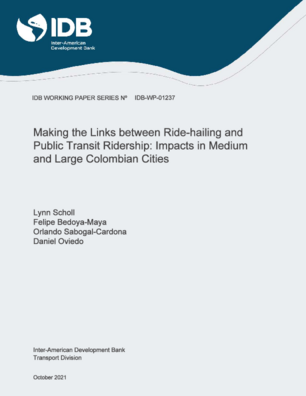Making the Links between Ride-hailing and Public Transit Ridership: Impacts in Medium and Large Colombian Cities
Date
Oct 2021
As transit ridership continues to fall in many cities across the globe, key policy debates continue around whether Uber and other ride-hailing services are contributing to this trend. This research explores the effects of the introduction of ride-hailing to Colombian cities on public transportation ridership using Ubers timeline as case study. We test the hypothesis that ride-hailing may either substitute or compete with public transit, particularly in cities with large transit service gaps in coverage or quality. Our analysis builds on historic transit ridership data from national authorities and uses a staggered difference-in-difference model that accounts for fixed effects, seasonality, socioeconomic controls, and the presence of integrated transport systems. Despite large reductions in transit ridership in most cities, our results suggest that Uber is not statistically associated with the observed drop in ridership. Moreover, consistent with evidence from previous research, public transit reforms implemented between 2007 and 2015 throughout Colombian cities appear to have contributed substantially to the declines in transit ridership observed across the country. Findings in this paper inform policy-targeted insights and contribute to current debates of the links between ride-hailing and public transit in cities in Latin America.




